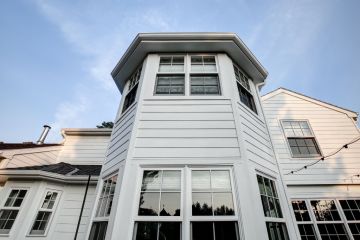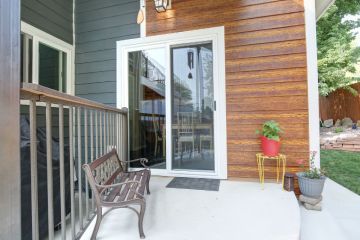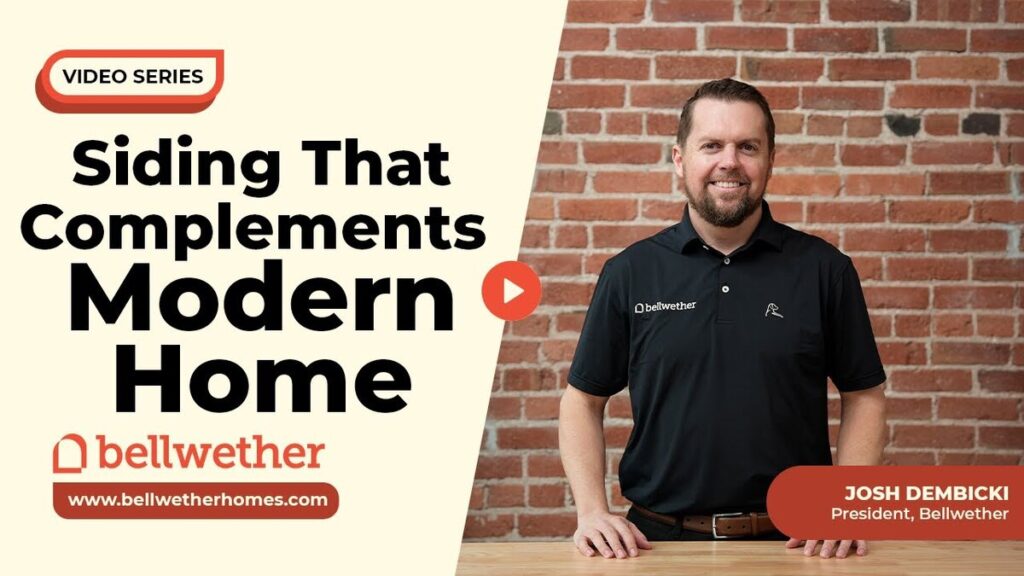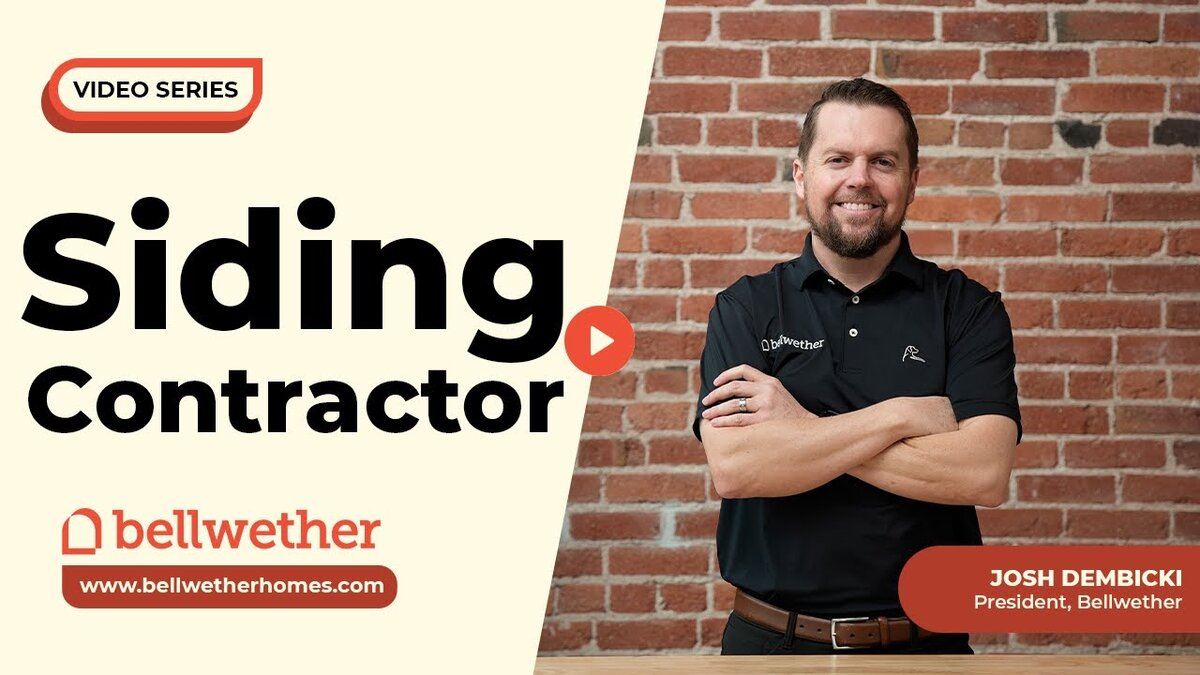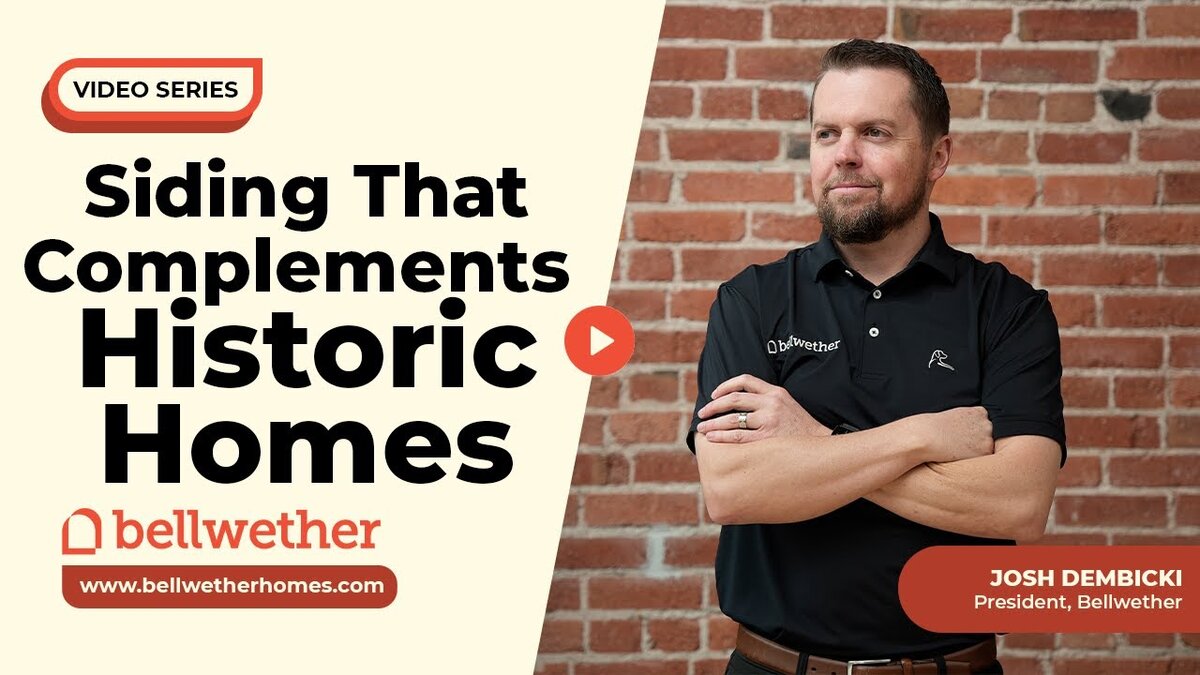Homes with stucco siding can be popular in Colorado and the American West because of its stone-looking finish. It’s traditional in dessert and arid climates for a Santa Fe or Spanish Colonial style home. While Denver-area and Front Range homes tend more toward modern and mountain rustic designs, there are some Colorado homes with other western-style influence that include stucco elements.
Understanding stucco siding.
Traditional stucco homes were once constructed from natural ingredients and mesh, applied directly to the wall sheathing in one application. In the last couple of decades, most home builders have used to EIFS (External Insulation and Finishing System) stucco system, which includes added synthetic materials sprayed over a polystyrene foam board, followed by a fiberglass mesh and a finishing coat. Generally, stucco is a monolithic product, meaning it is sprayed on and hardened within a day. This makes any version of a stucco appealing in terms of cost, but the benefits stop there, and we want Colorado homeowners to understand why.
Stucco siding is not the best option for Colorado homes.
Whether or not your home has modern stucco or an older stucco product, stucco is generally hard to maintain. While the Colorado climate is dry, stucco was made popular in much more arid climates, like Arizona and New Mexico. In Colorado, with monsoon season and heavy snows, moisture is still an issue for a non-durable material such as stucco. Stucco siding doesn’t hold up around problem areas that affect other traditional sidings, such as windows, light fixtures, hose attachments, and penetrable places require caulking and sealing.
Once moisture leaks into the stucco in these areas, it is trapped behind the walls and will begin causing damage quickly. Unlike other forms of home siding which are designed for air flow, stucco doesn’t breathe. Due to the stucco application method, the water damage will not only affect the stucco itself, but can begin to rot the sheathing and framing behind the stucco covering.
The first signs of water damage to your stucco and walls are cracks or bubbling along the exterior walls, but it is possible you will begin to see interior water damage as well. Patching stucco cracks isn’t impossible, but the problem usually extends much further than the visible damage, like a crack. Any stucco application service committed to quality work will remove an entire area of stucco to determine the root issue and the extent of the damage. You may have to replace and entire wall’s worth of stucco for a two-foot crack, making it less cost effective than more durable siding materials.
For Colorado homes, fiber cement siding is the right choice.
We recommend fiber cement siding over any other siding option—especially stucco—because it is the best choice for Colorado homes, for a number of reasons. Not only does it add long-lasting beauty and value to your home, the strength and long-term durability of the materials is ideal for withstanding harsher Colorado weather and environmental concerns that make stucco such a susceptible material.
First and foremost, fiber cement siding is very resilient against natural elements, and most especially, fiber cement siding is fire resistant. For Colorado homeowners, and especially for those who own mountain homes, wildfire is a very real, seasonal concern. In using fiber cement siding, you add an extra layer of defense to protect your home from fire. In addition, these resilient materials are also designed to withstand hail, extreme temperatures, exposure to moisture, and the dry climate that comes with the hot Colorado sun.
Along these same lines, fiber cement siding is as durable as it is resilient. Not only does fiber cement siding safeguard your home from natural elements, it stands the test of time. The protective appeal of fiber cement siding will last for many years—and it will remain beautiful even after this long-term exposure.
What is best about fiber cement siding is that this resiliency and durability comes with little to no maintenance. Fiber cement siding maintains its color and style with little more than an occasional power washing, so you can simply enjoy the beauty and comfort of your home without concern for replacement or care.
Removing your stucco siding for a full siding replacement.
Because we believe in durability and work with long-lasting products such as fiber cement siding, Bellwether doesn’t patch or reapply stucco. However, we do offer stucco removal services. This process can be messy as stucco cannot be removed in panels or planks but will chip off in small pieces. The first thing to determine is what is underneath the stucco. If you knock on the wall and it sounds hollow, you likely have a more modern stucco with foam board underneath. If it is dense-sounding, probably your stucco was applied directly to a brick wall or even sheathing. Our removal teams are very careful to scrape away your stucco without damaging whatever wall is underneath the product, and because of this slow process and attention to detail, stucco removal can also be more costly. Additionally, if the water damage has spread beyond the stucco itself, your walls may need new sheathing or even framing. Because stucco traps and retains moisture, underlying walls start to disintegrate quickly, proving unsteady and unsafe.
Bellwether believes that stucco removal is worth the investment. Because even patching is such a large and involved project, most homeowners don’t want to be placed in the position of repairing stucco more than once. Better to remove the damaged product entirely and opt for something beautiful and durable, like fiber cement siding. And if the water damage has claimed your sheathing or wall structure, our full-service crew can address these issues as well, demoing the damaged areas and replacing everything with high-quality materials that ensure a safe, reliable finish.



